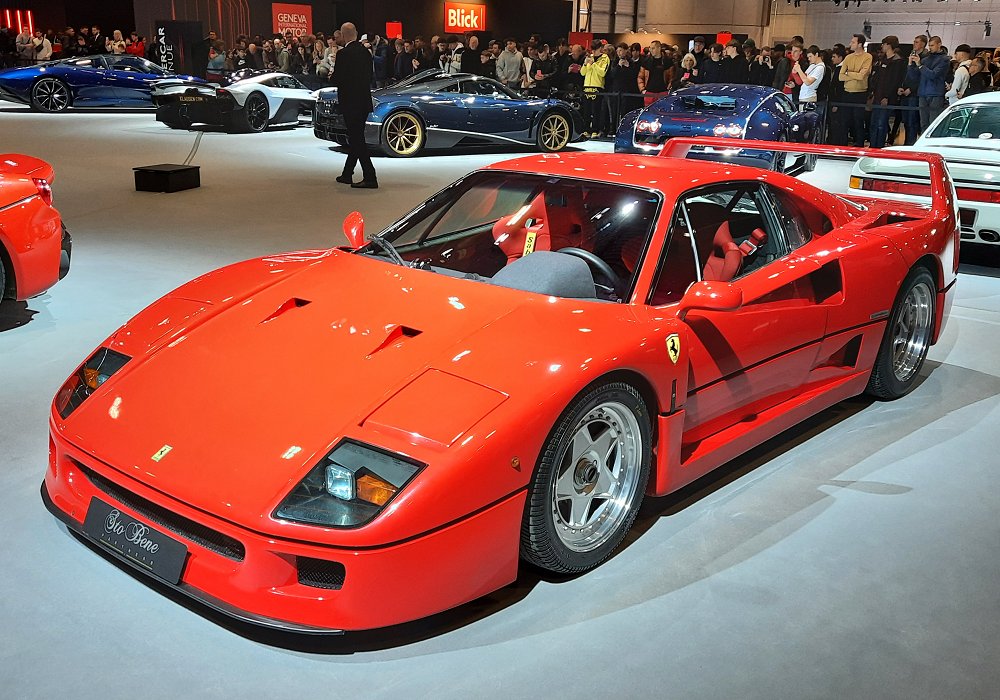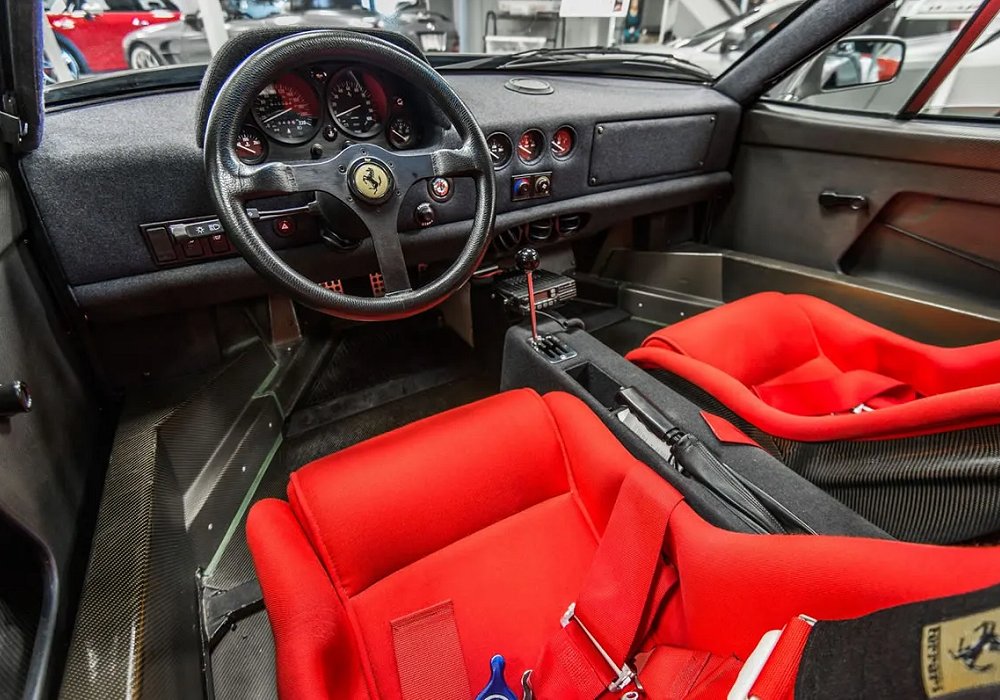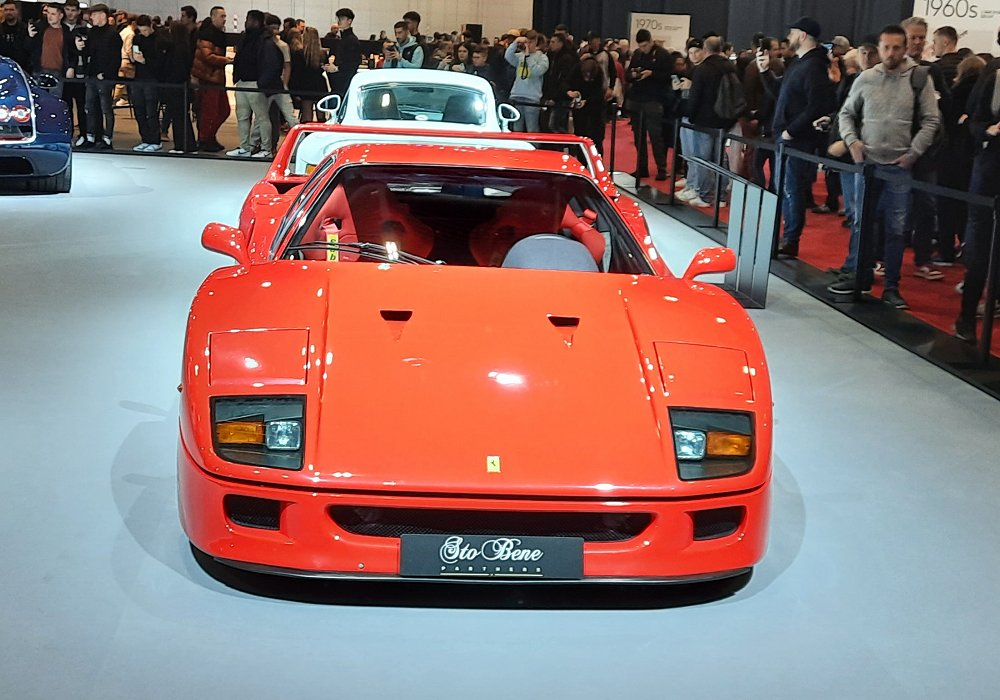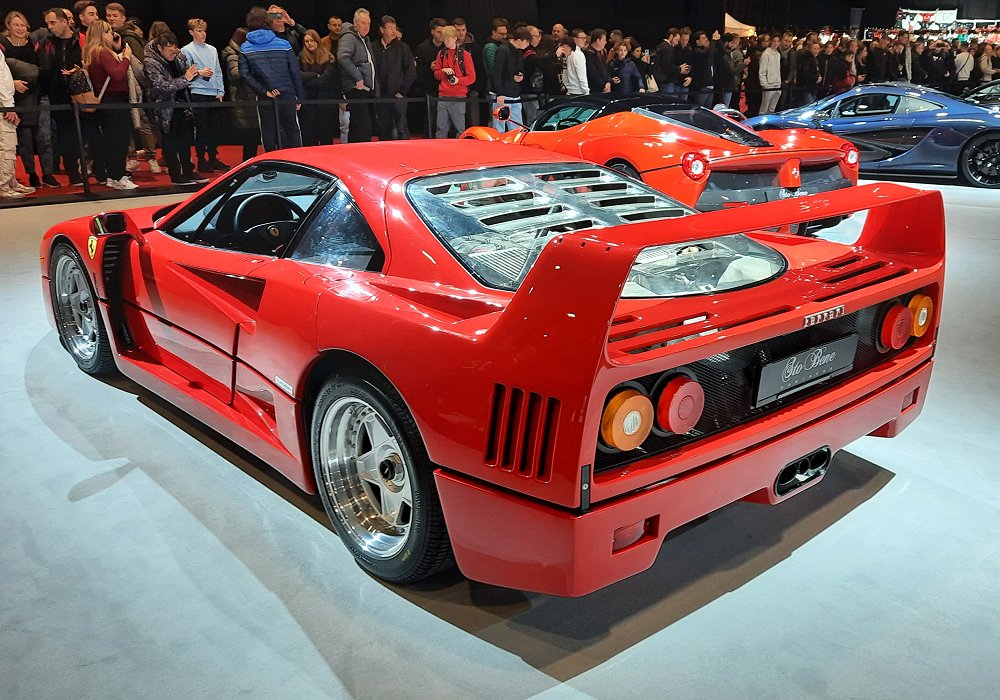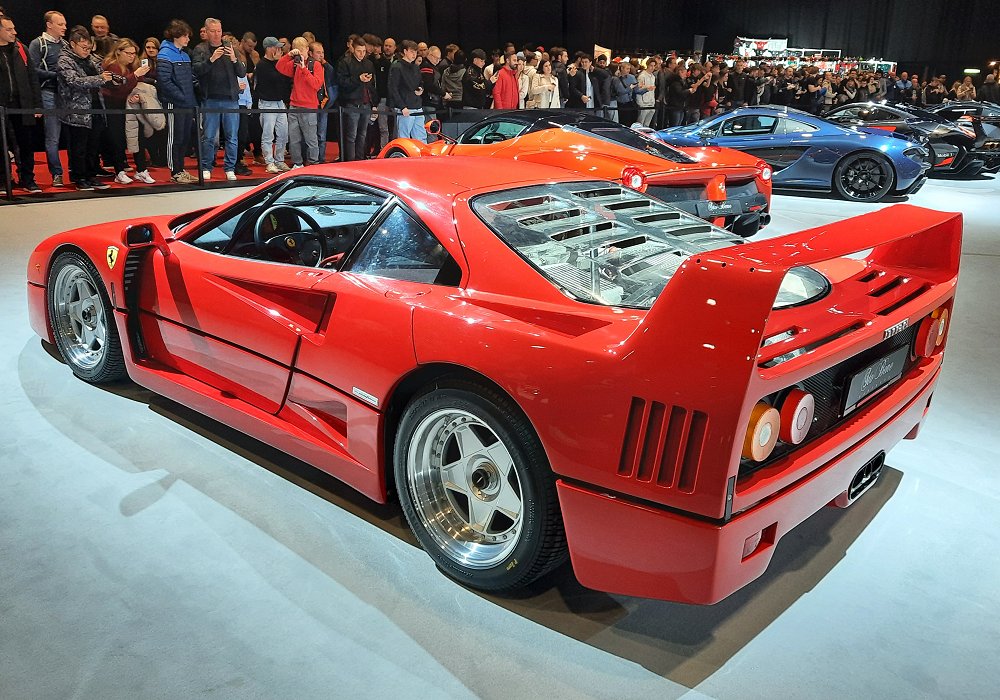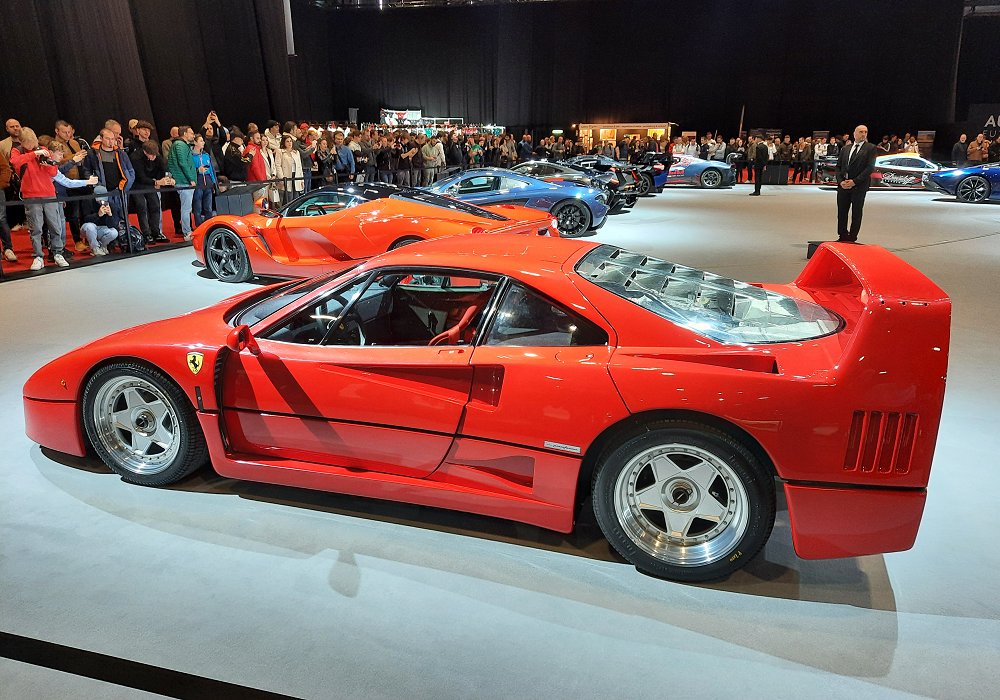Description
The Ferrari F40, introduced in 1987, is often hailed as one of the greatest supercars ever built and a defining symbol of Ferrari’s engineering philosophy. Conceived to mark the company’s 40th anniversary, it became the last Ferrari road car to be personally overseen and approved by Enzo Ferrari himself, giving it an almost legendary aura. Its creation was directly inspired by the Ferrari 288 GTO Evoluzione, a prototype racer that never reached the track due to regulation changes. Instead of discarding the project, Ferrari transformed it into a road-going supercar that captured the essence of a racing machine.
At the heart of the F40 was a 2.9-litre twin-turbocharged V8 engine, derived from the 288 GTO but significantly upgraded. It produced 478 horsepower and 577 Nm of torque, astonishing figures for the late 1980s. Power delivery was ferocious, with strong turbo lag followed by an explosive surge, demanding skill and nerve from the driver. Paired with a five-speed manual gearbox, the F40 could sprint from 0–100 km/h in around 4.1 seconds and, more importantly, achieve a top speed of 324 km/h. At the time of its release, this made it the world’s fastest production car, a record that cemented its status as a technological marvel.
The F40’s construction was equally radical. Ferrari employed lightweight composite materials such as carbon fiber, Kevlar, and aluminum to keep weight down to just 1,100 kg. The focus on aerodynamics was evident in its wedge-shaped silhouette, integrated air ducts, and the now-iconic fixed rear wing that ensured stability at high speeds. Its raw, uncompromising appearance was as much a product of function as it was of form, with every vent, scoop, and line designed to improve airflow and cooling.
Inside, the F40 was stripped to the bare essentials, further emphasizing its track-inspired philosophy. Luxuries such as carpets, sound insulation, and door handles were discarded in favor of bare carbon fiber panels, simple cloth seats, and exposed mechanicals. Sliding Lexan windows were fitted in early models instead of conventional glass to save weight, and the instrumentation was minimal, giving the driver nothing but the essentials. It was a cockpit designed purely for the driving experience, with no concessions to comfort or convenience.
When Ferrari first announced the F40, the plan was to produce only 400 examples. However, demand far exceeded expectations, driven by both its performance credentials and the cultural impact of being Enzo Ferrari’s final creation. Ultimately, over 1,300 cars were built between 1987 and 1992, yet the car never lost its aura of exclusivity. Each car commanded immense respect, and values on the collector market have remained high, with well-preserved examples achieving extraordinary prices today.
The F40 was not only a road car but also inspired track variants and privateer racing efforts, although Ferrari never officially developed it into a factory-backed competition machine. Even so, its raw capability meant it could hold its own on circuits, further reinforcing its reputation as a road-legal race car.
Culturally, the Ferrari F40 became a benchmark for what a supercar should be. It was brutally fast, unashamedly loud, and demanded absolute focus from its driver, embodying the purest connection between man and machine. It stood in stark contrast to the increasing trend of comfort and technology in high-performance cars of the 1990s, making it one of the last truly analog supercars of its kind.
Today, the Ferrari F40 is revered as one of the most iconic Ferraris ever produced. It represents a unique convergence of racing heritage, cutting-edge engineering, and uncompromising philosophy. More than just a car, it is seen as a statement of intent from Ferrari, a reminder that at its heart the company’s mission was to build machines that stirred the soul as much as they pushed the boundaries of speed and performance. It remains a symbol of an era when Ferrari was at the height of its power, producing cars with little concern for regulations or comfort, and every concern for delivering the ultimate driving thrill.
